How internal audit can improve by embracing technology
Rapid technological advancements pose a significant challenge to internal audit functions at organizations of all sizes.
“Not only does internal audit need to have a point of view on what risks come with those technologies,” said PwC’s Lauren Massey, “but the best way to make sure they have that point of view is by embracing these emerging technologies themselves.”
PwC’s 2018 State of the Internal Audit Profession survey report, Moving at the Speed of Innovation, published Monday, shows that many internal audit functions soon will be implementing transformational new technologies. The survey of more than 2,500 board members, senior executives, and audit professionals in 92 countries revealed that in the next two years, the portion of internal audit organizations:
- Using self-service data extraction from financial or operational systems will increase from 74% to 94%.
- Using workflow/dashboarding/reporting tools within internal audit will increase from 53% to 85%.
- Using workflow/dashboarding/reporting tools shared cross-functionally will increase from 33% to 71%.
- Using governance, risk management, and compliance technology tools will increase from 23% to 62%.
Massey, a principal for internal audit and risk management solutions for PwC, said the most advanced internal audit organizations are learning how the risk profile is changing and understand how fast it is changing. They are more prepared to have a point of view on that risk because they are also pushing forward with new technology in their own operations.
“The question really becomes, can internal audit keep pace?” Massey said. “And this is an opportunity and a real inflection point that you can, but you need to take action now not only to understand where this innovation is going, but to be innovative yourself.”
The most successful internal audit functions, Massey said, are pursuing an innovation strategy that is paired with their talent and skills development process. Nearly 80% of the chief audit executives surveyed said internal audit needs to expand or improve its technology skills to meet its future needs.
Part of this strategy for some organizations includes the hiring of data scientists who bring a new skill set that helps the internal audit function capitalize on new technological tools. Part of the strategy includes training current staff members to use new tools.
Massey said truly effective use of technology goes beyond just learning to use new tools.
“In the past it was easy to run toward the shiny new toy,” she said. “But if you don’t understand what the full benefits are, you are missing something. The key piece is evaluating how to leverage your talent and technology investments together. The opportunity this creates is capacity, and imagine what internal audit departments can do with this capacity when the pace of change is increasing.”
Adopting new technology and developing new skills can be costly, but Massey suggested that internal audit doesn’t have to bear those costs on its own. Creating partnerships with other compliance and risk management functions can help everyone share costs and develop analytical tools that will be synchronized and effective throughout the organization.
While all this innovation and synchronization may seem challenging, Massey said it also can invigorate the organization — and even the internal audit profession as a whole — because people are eager to learn new skills.
“Most people are willing to change their skill set,” she said. “That’s something they want to do. They want to become more valuable and expand what they can do . . . and the profession overall becomes something that’s more attractive. And that’s an important piece, too. From a profession perspective we want to make sure we’re attracting talent as well as developing talent.”
SOURCE: https://www.journalofaccountancy.com/news/2018/mar/improving-internal-audit-with-technology-201818551.html
Ken Tysiac is a JofA editorial director.













